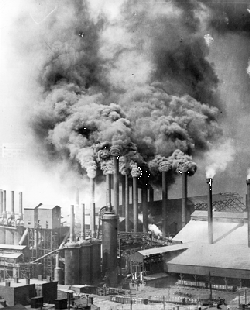Sessions Eleven & Twelve: Cancer

Text Readings: |
Aldrich & Griffith, Chapter 9 |
Web Readings: |
Cancer and Work |
Topics: |
Occupational Environmental Carcinogenic Hazards / History of Occupational Epidemiology / Characteristics of Carcinogens / Listing Occupational Carcinogens / Incompleteness of Current Lists / Sources of Evidence on Human Risks to Chemicals / Epidemiology / Animal Experientation / Epidemiologic Approaches to Discovering Carcinogens / Cohort Studies / Case Control Studies / Case-Control- Nested-Within-A-Cohort Studies / Routine Record Study of Occupation & Disease Occurence / Geographic Correlations / Pesticides & Cancer / Epidemioloigc Evidence / Types of Epidemioligic Studies Available / Research Needs / Epidemiologic Evidence of Cancer Sites / Lung Cancer / Lung Cancer Occurence / Environmental Causes / Research Needs |
Assignment for Session 13: |
|
Sessions
